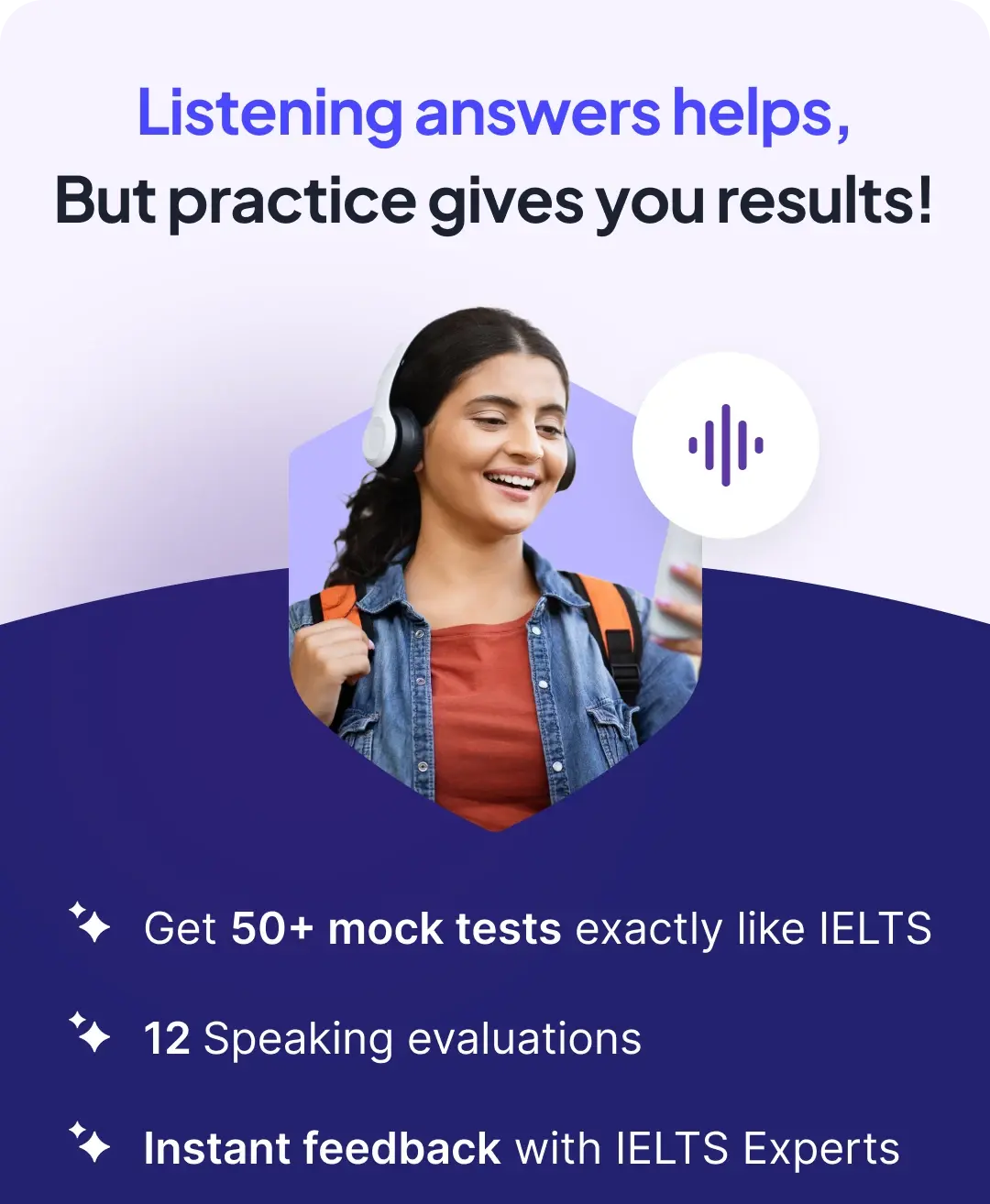Describe A Good Advertisement That You Think Is Useful: IELTS Speaking Cue Card
You should say
- Where you can see it?
- What did it show?
- Why do you think it is useful?
- Explain how you feel about it.
36 unique answers with expert feedback
Band 6-7
00:00
/
00:00
Follow up questions
Follow up questions
What features make this AI cooking appliance stand out?
How do you think AI will change cooking in the future?
What are the potential downsides of relying on AI for cooking?
Band 6-7
00:00
/
00:00
Follow up questions
Follow up questions
What are some other advertisements that you find effective?
How do advertisements influence people's buying decisions?
Do you think advertisements can sometimes be misleading?
Band 6-7
00:00
/
00:00
Follow up questions
Follow up questions
What features of the Samsung Galaxy S22 Ultra do you find most appealing?
How do you think advertisements influence consumer choices?
Do you think the price of the Samsung Galaxy S22 Ultra is justified?
Practice other cue cards
Band 6-7
00:00
/
00:00
Follow up questions
Follow up questions
How do you think advertisements impact public behavior during crises?
What elements make an advertisement effective in conveying important messages?
Can you think of other advertisements that have had a similar impact?
Band 6-7
00:00
/
00:00
Follow up questions
Follow up questions
Why do you think advertisements are important in society?
How do you feel about the portrayal of men's sanitary napkins in advertisements?
Can you think of other advertisements that have had a social impact?
Cue 1:Where you can see it?
- Begin by describing the medium where you encountered the advertisement, such as television, social media, or billboards.
- Mention the specific location or context, like during a popular TV show or while scrolling through Instagram.
Example
I first saw this advertisement on television while watching my favorite show in the evening. It was during a commercial break, and the vibrant colors and catchy jingle immediately caught my attention.
Cue 2:What did it show?
- Summarize the main content of the advertisement, focusing on the product or service being promoted.
- Highlight any key visuals or messages that stood out to you.
Example
The advertisement showcased a new brand of healthy snacks made from natural ingredients. It featured happy families enjoying the snacks together, emphasizing how these snacks are not only tasty but also nutritious. The visuals were bright and inviting, making the product look very appealing.
Cue 3:Why do you think it is useful?
- Explain the benefits of the product or service being advertised and how it addresses a common need or problem.
- Discuss why this advertisement effectively communicates its usefulness to the audience.
Example
I think this advertisement is useful because it promotes healthy eating habits, which is essential in today's fast-paced world where junk food is prevalent. It encourages people to choose better snack options, especially for children, making it a valuable message for families.
Cue 4:Explain how you feel about it.
- Share your personal feelings or thoughts about the advertisement and the product.
- Mention any actions you took after seeing the ad, such as trying the product or recommending it to others.
Example
I felt very positive about this advertisement. It inspired me to try the snacks for my kids, and after tasting them, I was pleasantly surprised by how delicious they were. I even recommended them to my friends, as I believe they are a great alternative to unhealthy snacks.
Conclusion
Example
In conclusion, this advertisement not only caught my attention but also conveyed an important message about healthy eating. It effectively showcased a product that I found useful and appealing, making me more conscious of my snack choices.
Following this structure will ensure you cover all the essential points while providing a clear and engaging response to the cue card topic.
Tips to answer this Cue Card
1: Vague Descriptions
Using vague language can make your answer unclear. It's important to provide specific details about the advertisement to engage the listener.
Tip
Use clear examples and specific details about the advertisement, such as its visuals and message, to enhance your response.
2: Ignoring Personal Feelings
Failing to express your personal feelings about the advertisement can make your answer less relatable. Personal insights add depth to your response.
Tip
Share your emotions and thoughts about the advertisement, explaining why it resonates with you personally.
Lack of Structure
A disorganized response can confuse the listener. It's essential to structure your answer logically to cover all cues effectively.
Tip
Follow the cue prompts in order, ensuring you address each one clearly and concisely for a coherent response.
IELTS Cue Cards asked last week
Reported by Leap students who gave IELTS
All Answers
Here are all the answers by real-users practicing speaking for IELTS Cue Cards on our IELTS Prep App.
Band 6-7
Band 6-7
Band 6-7
Band 6-7
Band 6-7
Band 6-7
Band 6-7
Band 6-7
Band 6-7
Band 6-7

Explore
473 Cue Cards

Personal Experience
121 Cue Cards

Describing People
66 Cue Cards

Travel
47 Cue Cards

Personal Development
45 Cue Cards

Hobbies/Interests
44 Cue Cards
Environment/Culture
39 Cue Cards

Tech/Media
27 Cue Cards

Education/Work
19 Cue Cards

Social Issues
19 Cue Cards

Describe An Object
16 Cue Cards
Business/Shopping
16 Cue Cards

Food/Cooking
8 Cue Cards
Fashion
6 Cue Cards
Master IELTS Speaking with Leap's Self-Prep Course
Students Enrolled
2,411 Reviews

Master IELTS Speaking with Leap's Self-Prep Course
Students Enrolled
2,411 Reviews



